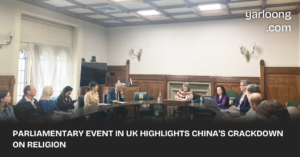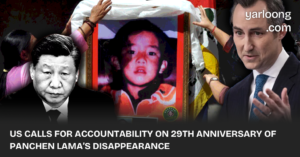
Recent diplomatic moves between Nepal and China, marked by their joint statement on September 26, 2023, have spotlighted heightened concerns over Tibet and the plight of its people. As per the International Campaign for Tibet (ICT), this bilateral agreement could potentially tighten the screws on Tibetan matters more than ever before.
The joint declaration, a result of the visit by Nepal‘s Prime Minister Pushpa Kamal Dahal ‘Prachanda’ to Beijing, fortifies China’s stance on Tibet. Out of the 13 points presented in the statement, four shed light directly on Tibetan affairs, encompassing areas such as politics, health, boundary management, and infrastructure.
Tencho Gyatso, President of the International Campaign for Tibet, voiced his concerns, stating, “Nepal is bound by international law to respect the principle of non-refoulement, which precludes states from returning a person to a place where he or she might be tortured or face persecution.” The principle finds its roots in several treaties, such as the Convention against Torture, which Nepal has signed and ratified.
ALSO READ: China Intensifies Disinformation Campaigns Against Taiwan: Report
Diplomatically, the joint statement highlights Nepal‘s stance that “Tibet affairs are China’s internal affairs,” thereby committing not to allow any actions against China originating from Nepali territory. This statement is a departure from earlier joint statements that linked Tibet and Taiwan under the One China Principle.
As the ICT reports, the agreement could further jeopardize Tibetans who manage to escape to Nepal. Once a common route for Tibetan refugees, the numbers making it to Nepal have dwindled alarmingly in recent years. From an annual influx ranging from 2,500 to 3,500 Tibetans during the 1980s until 2008, the numbers took a nosedive. A mere five Tibetans reached Nepal in 2022.
Articles 26 and 27 of the agreement between Nepal and China discuss individuals who cross the border without permission. With explicit instructions on dealing with those who cross “illegally”, there are fears that Tibetans could be deported back to China without any legal protection.
One of the more alarming clauses in the agreement deals with the possible use of firearms against those crossing the border without authorization. This brings to mind the harrowing incident from 2006 when 17-year-old Tibetan nun Kelsang Namtso was fatally shot by Chinese forces during her escape to Nepal.
ALSO READ: China-Linked Hackers Target Tibetan, Uyghur, and Taiwanese Communities Using Malware
In the recent joint statement, there was a notable absence of the previously discussed “Treaty on Extradition”. Speculation is rife, as reported by the ICT, that Nepal may have retreated considering its potential diplomatic repercussions, particularly concerning the Tibetan diaspora in Nepal.
Furthermore, the joint statement touches upon various economic and technological developments, including the potential supply of grid power from China’s “Xizang” (Tibet) to Nepal and investments from the Lhasa Economic and Technological Development Zone Investment Development Company in Nepal.
While the statement has been made public, the International Campaign for Tibet notes that Prime Minister Dahal is slated to visit Tibet, possibly on September 29, before heading back to Nepal.






